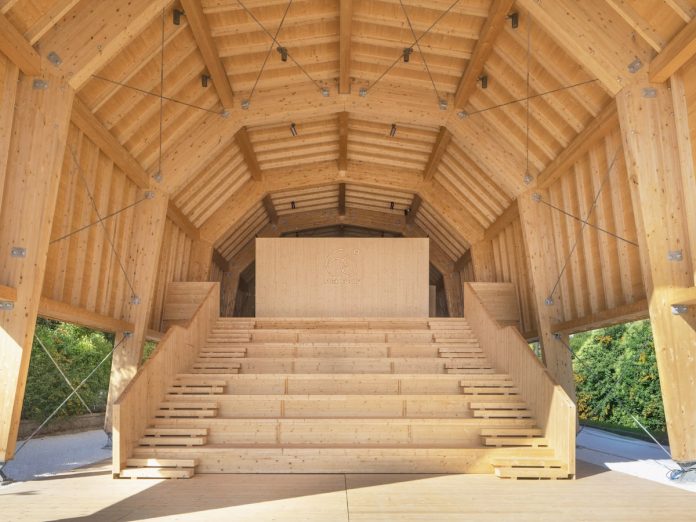In 1963, a young entrepreneur, Mario Pedrali, opened a workshop in Palazzolo sull’Oglio (Brescia) to produce chairs, tables and furnishing accessories. Sixty years later, that workshop has grown into a structure with 340 employees and three locations, a handful of kilometres from where its story began.
Sixty years is an important birthday, and to celebrate it Pedrali has created a pavilion – the Pedrali Pavilion – designed by AMDL CIRCLE and Michele De Lucchi and inaugurated on 15 September in Mornico al Serio (Bergamo) – and exhibition curated by Luca Molinari Studio: Pedrali60, we design a better future , which can be visited until the end of October not only by collaborators and architects belonging to the Pedrali community, but also by schools, customers and enthusiasts.
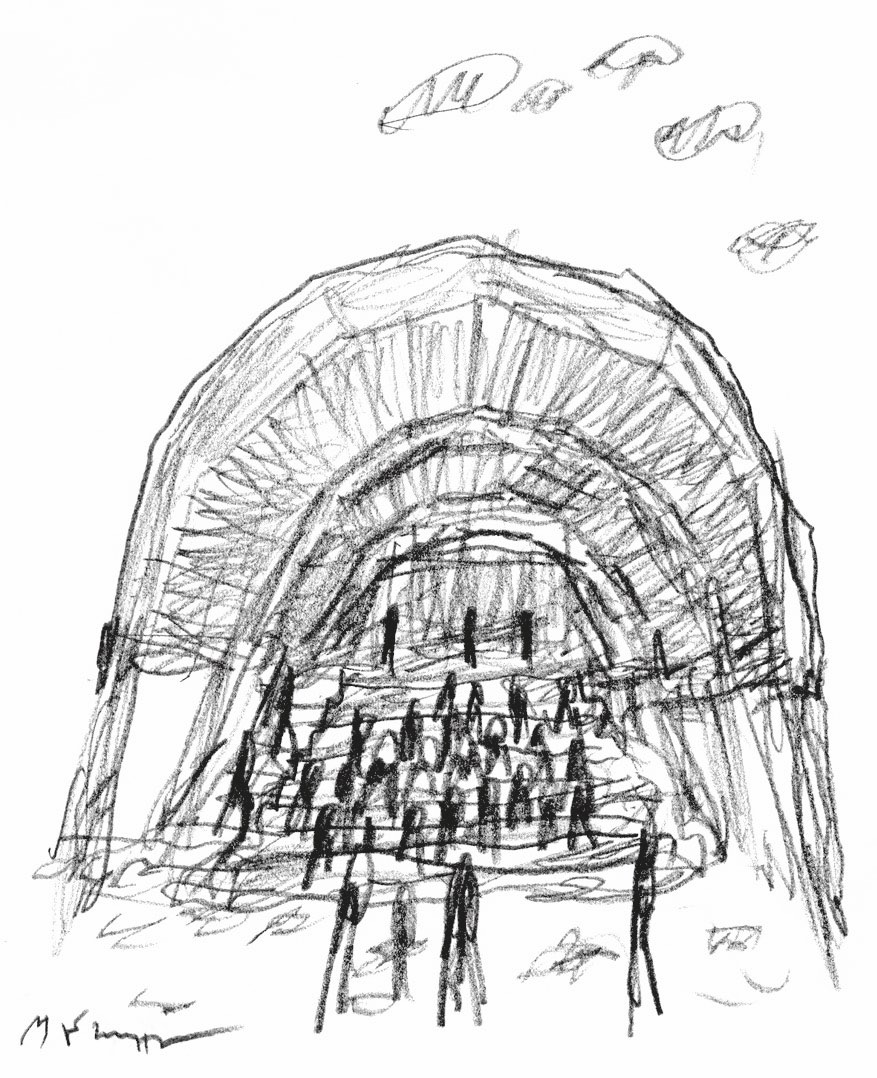
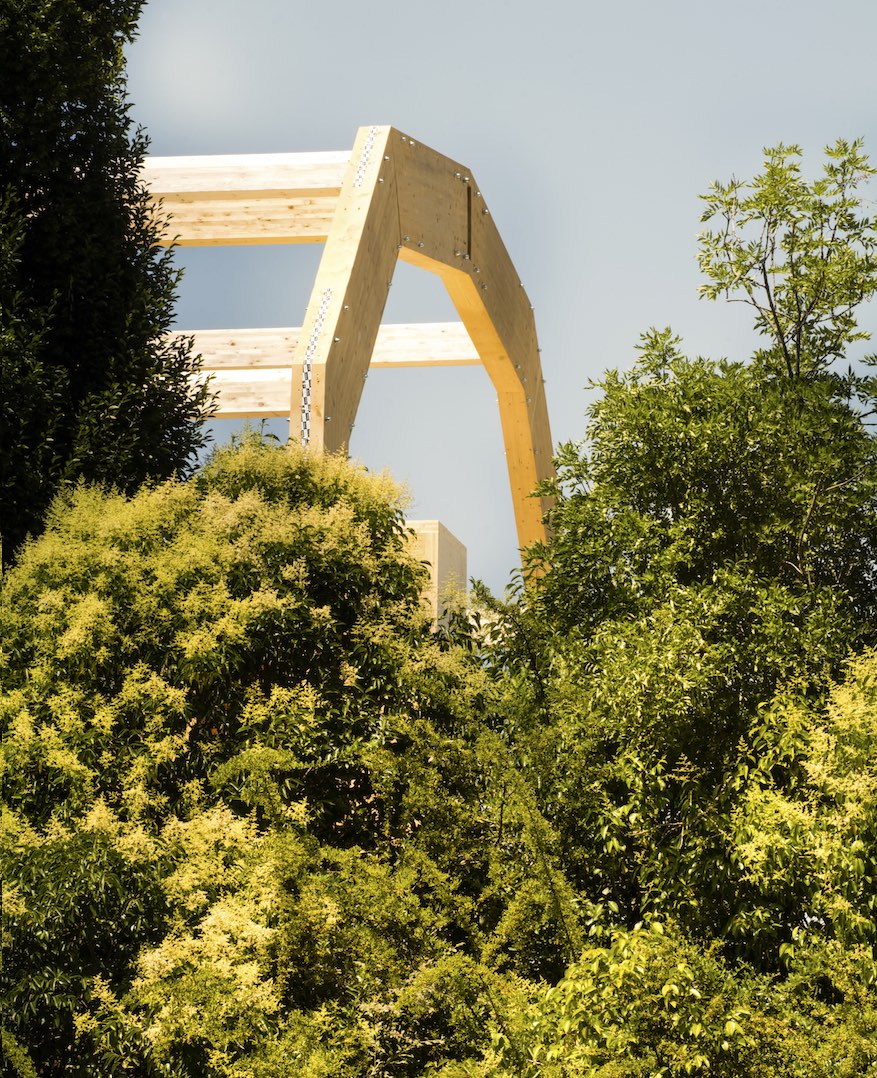
“The Pedrali Pavilion is located in our Headquarters in Mornico al Serio, where everything is conceived and comes to life. Ideas and projects for the future come to life. The decision to locate the Pavilion in our territory makes us think of our roots, of our places. It is a new space that belongs to us and will be the legacy of this very special anniversary,” said Monica Pedrali, the company’s CEO.
The pavilion is like a large elevated vault that houses two exhibition levels within it. The main structure consists of arched portals, connected by horizontal beams, and rests on light but solid ‘legs’. The entire structure is made of PEFC-certified wood, a material that embraces both traditional craftsmanship and innovative production, reflecting the company’s values.
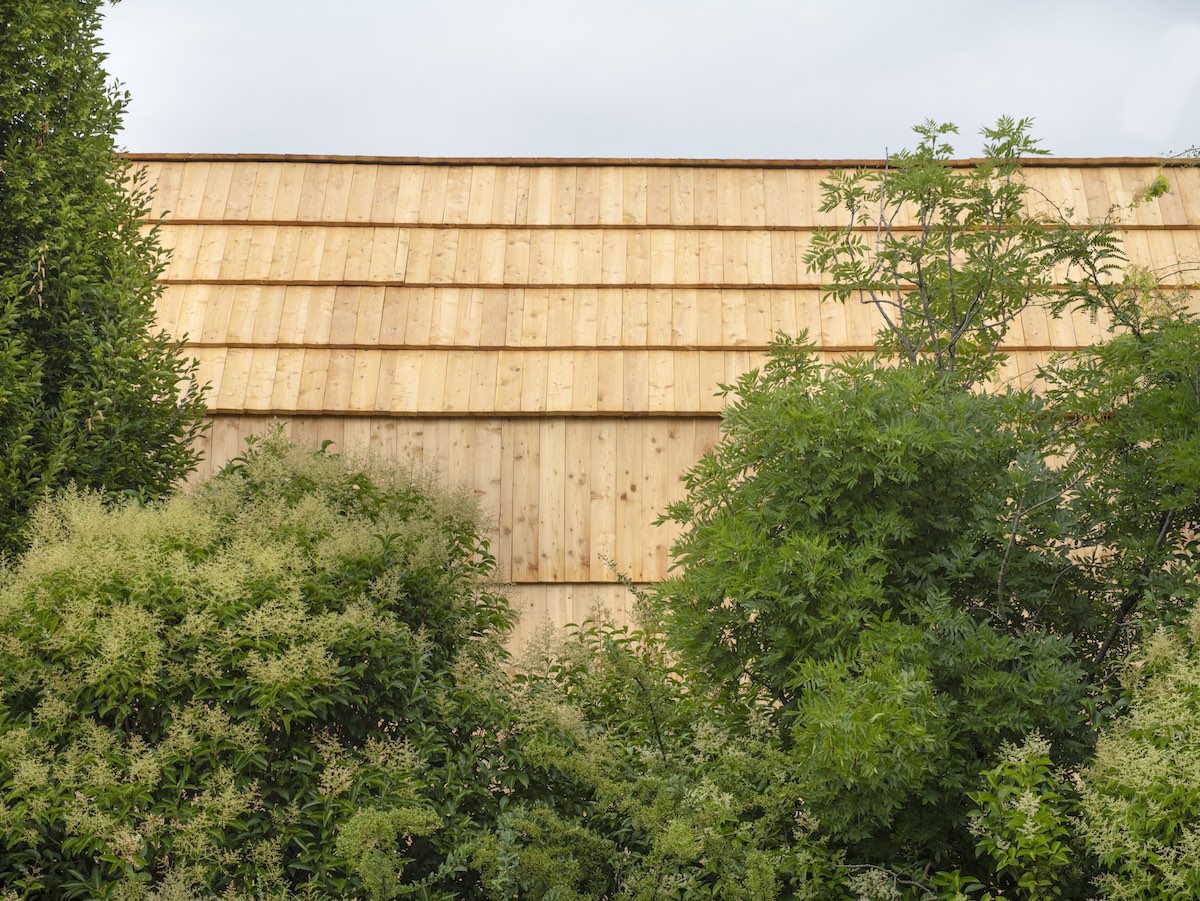
To welcome visitors, an entrance staircase that fulfils a dual function: it is the access point to the exhibition and at the same time a tribune where one can stop or sit to participate in presentations and talks.
“The pavilion is long and narrow not only because that is how the land on which it stands is; we wanted to make it that way because it is a kind of tunnel that runs through the history of the company,” explained Michele De Lucchi during the official presentation. “It is made of wood, the most intelligent material we can use today. And it has legs, which we needed to explain immediately, without mincing words, that this pavilion is made to move, to be temporary: because if there is one important thing, today, it is that we must be ready for all transformations”.
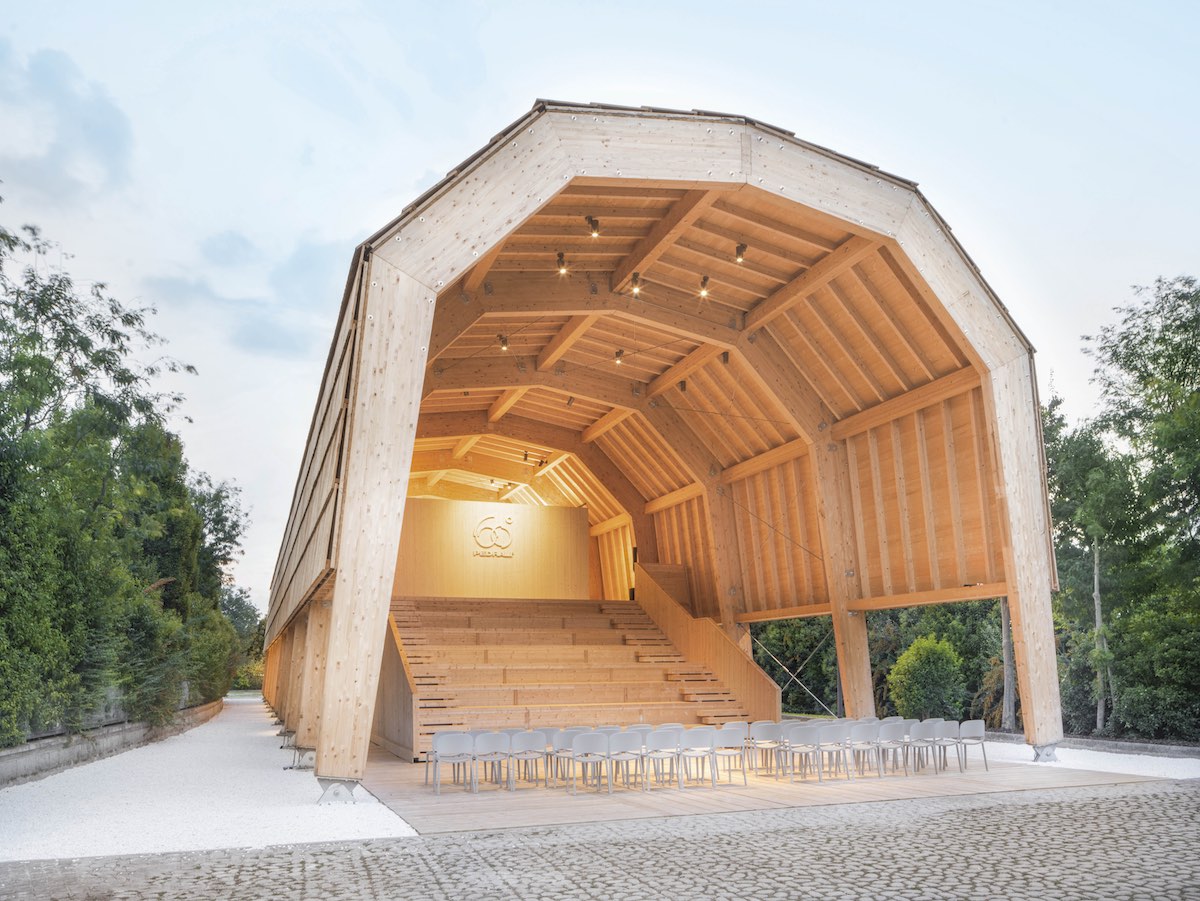
This is a place designed to welcome a community of people who recognise themselves in a set of shared values. It was precisely the term ‘community’ that returned several times in the architect’s speech, linking it to the theme of sustainability, of which it is an essential factor.
Luca Molinari, the curator of the exhibition, added: “The fact that the company has decided to celebrate itself by building a small fragment of its future, I believe, is a demonstration of its own identity. And this pavilion, created to be disassembled and reassembled, is a demonstration of its way of working, in which sustainability and design aim for the highest quality with tomorrow in mind”.
The structure, emphasised Molinari, took shape in eight months, a very short time: a living testimony of the ability that both the company and the people who work there have to believe in a project.
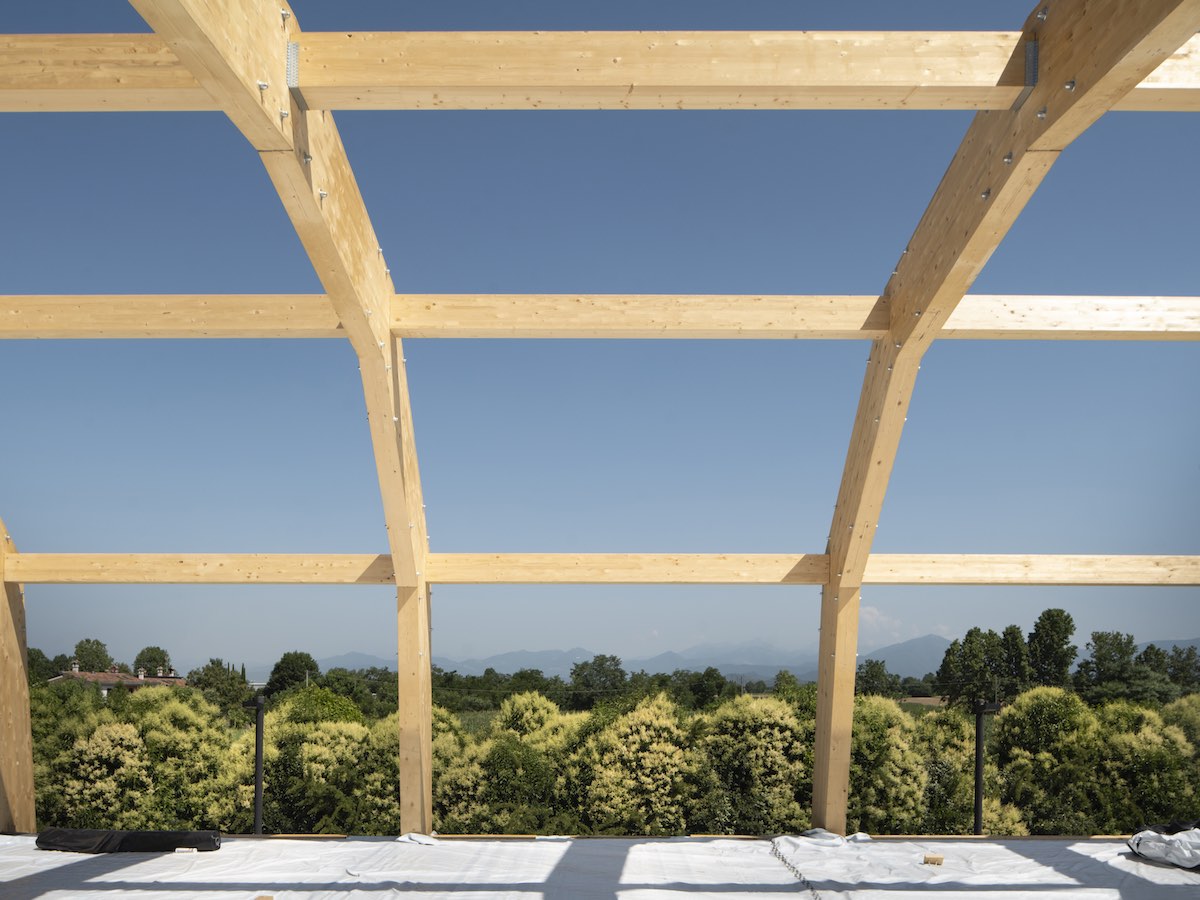
The exhibition gathers documents, working tools, prototypes, photographs, business letters, awards received: a heterogeneous material that tells the story of the company and the people who built it, whom we see growing up (there are also two beautiful portraits of Mario Pedrali as a child), working, living.
The ‘doing’ dimension, without rhetoric, is one of the real protagonists. “We have always invested in state-of-the-art technology, machinery and equipment and, thanks to the contribution of the people who put their know-how and manual skills at the company’s disposal every day, we really do make a difference. It is from this combination of technology and know-how that the beauty of the products we make today is born: hence the choice of the motto Beauty, Tradition, Innovation as the fil rouge that fully expresses our identity,” says Giuseppe Pedrali, CEO.
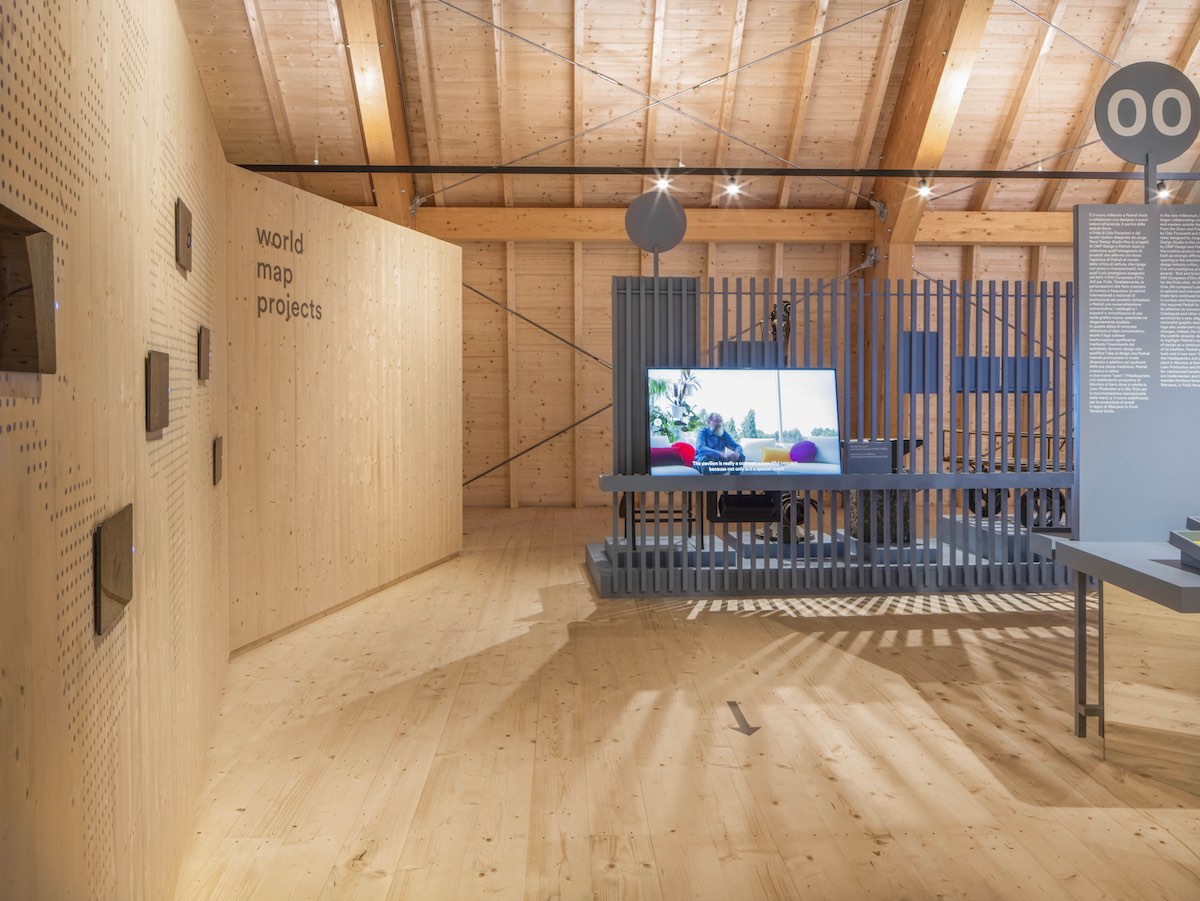
In parallel, the central core of the space hosts many monitors with interviews with people who have been important to the company, including some designers (such as Odo Fioravanti, whose Frida chair brought the Compasso d’Oro award to the company in 2011).
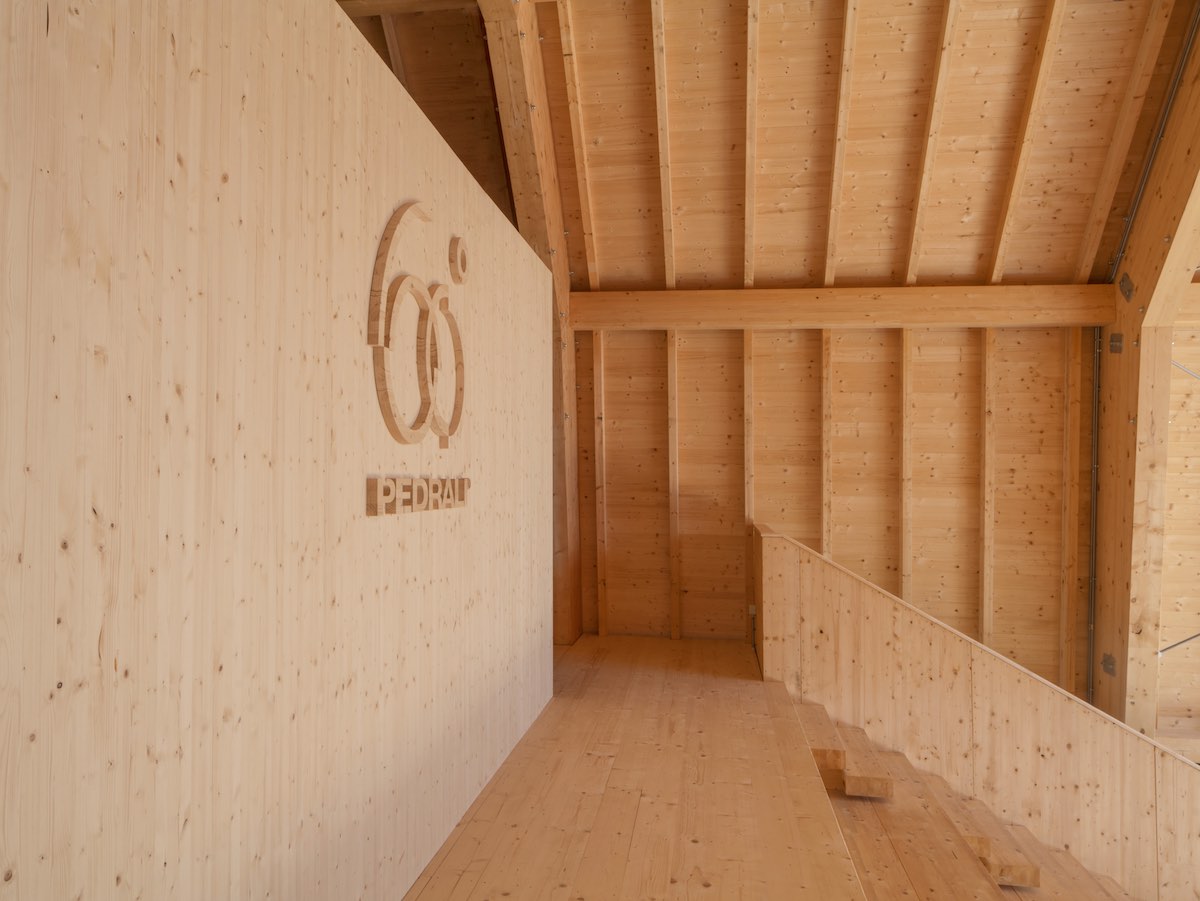
The exhibition concludes with a gallery of portraits by photographer Delfino Sisto Legnani. A snapshot of what the company is today through the faces and words of the people who work there. The exhibition can be visited by making a reservation on pedrali.com.
All photographs © Filippo Romano

